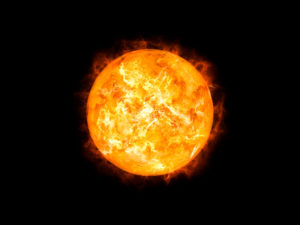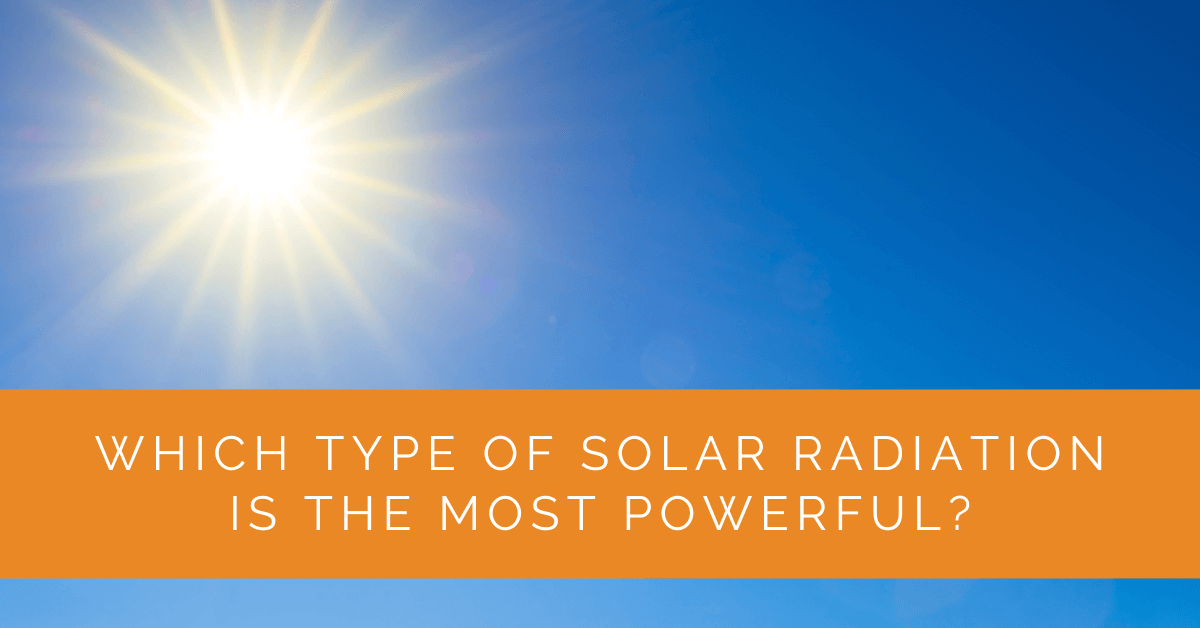Solar radiation plays a pivotal role in harnessing solar energy. Understanding the power of different types of solar radiation is crucial for optimizing energy generation. This article will explore the various types of solar radiation and determine the most powerful type. Let’s delve into the fascinating world of solar radiation!
Contents
- 1 Key Takeaways
- 2 Understanding Solar Radiation
- 3 Measuring Solar Radiation
- 4 Power of Solar Radiation
- 5 So, Which Type of Solar Radiation Is the Most Powerful?
- 6 Harnessing Solar Radiation
- 7 Expert Insights From Our Solar Panel Installers About Which Type of Solar Radiation Is the Most Powerful
- 8 Experience Solar Excellence with Us!
- 9 Conclusion
Key Takeaways
- Gamma radiation is the most powerful type of solar radiation, but it doesn’t reach the Earth’s surface as part of solar radiation.
- Among the solar radiation types that reach Earth’s surface, UV radiation, particularly UV-C, is the most energetic, with UV-A and UV-B impacting daily life.
- To optimize solar energy generation, designing solar panels that effectively capture specific types of solar radiation and considering location-specific characteristics like latitude and altitude when designing solar energy systems is crucial.
Understanding Solar Radiation
What is Solar Radiation?
Solar radiation refers to the electromagnetic energy emitted by the sun. It encompasses various wavelengths, including visible light, infrared, and ultraviolet radiation.
Types of Solar Radiation
Solar radiation can be categorized into different types based on wavelength and energy level. These types include:
- Visible Light: Visible light is the portion of solar radiation visible to the human eye. It constitutes a significant portion of the solar spectrum and is responsible for the illumination we perceive.
- Infrared Radiation: Infrared radiation has longer wavelengths than visible light and is associated with heat. It is crucial in warming the Earth’s surface and contributes to the overall energy balance.
- Ultraviolet Radiation: Ultraviolet (UV) radiation has shorter wavelengths than visible light and is divided into three categories: UV-A, UV-B, and UV-C. UV radiation is known for its effects on skin health and its ability to cause sunburn.
Measuring Solar Radiation
Solar Irradiance
Solar irradiance measures the power of solar radiation received per unit area. It quantifies the amount of solar energy that reaches the Earth’s surface. Solar irradiance is typically expressed in units of watts per square meter (W/m²).
Spectral Distribution
The spectral distribution of solar radiation refers to the distribution of energy across different wavelengths. It provides insights into how solar radiation is distributed within the solar spectrum, highlighting the power and intensity of each wavelength range.

Power of Solar Radiation
Energy Content of Solar Radiation
The energy content of solar radiation is a crucial factor in understanding its power. The energy carried by solar radiation depends on the wavelength and intensity of the radiation. This energy can be converted into usable forms, such as electricity, through solar energy systems.
Influence of Solar Radiation Types
Different types of solar radiation have varying power and influence. Gamma rays, X-rays, and UV radiation are considered high-energy radiations, while visible light, infrared, and radio waves are lower-energy radiations. The power of each type depends on its wavelength and intensity.
Most Powerful Solar Radiation Type
When considering the power of solar radiation, it is important to note that the most powerful type is gamma radiation. However, gamma radiation is not part of the solar radiation spectrum that reaches the Earth’s surface. Among the solar radiation types that reach the Earth, the most energetic is UV radiation, specifically UV-C. However, the Earth’s atmosphere absorbs most UV-C radiation, so UV-A and UV-B are the primary UV radiation types that impact us.
So, Which Type of Solar Radiation Is the Most Powerful?
The most powerful type of solar radiation overall is gamma radiation. However, when considering solar radiation that reaches the Earth’s surface, the most energetic type is UV radiation. UV-C radiation has the highest energy levels but is mostly absorbed by the Earth’s atmosphere. UV-A and UV-B radiation, while slightly less energetic, have a greater impact on our daily lives. UV-B radiation is responsible for sunburns and is partially absorbed by the ozone layer. UV-A radiation penetrates the atmosphere more freely. Understanding the power and characteristics of different solar radiation types helps us harness their energy effectively in solar energy systems.
Harnessing Solar Radiation
Solar Panel Design and Efficiency
Solar panels are designed to capture and convert solar radiation into usable electricity. The efficiency of solar panels plays a crucial role in maximizing power generation. Solar panels’ design and technology are optimized to effectively capture specific types of solar radiation.
Considerations for Solar Energy Systems
Solar energy systems must be designed considering the specific types of solar radiation in a given location. Factors such as latitude, altitude, and atmospheric conditions influence the types and intensity of solar radiation available. Adapting solar energy systems to leverage the characteristics of solar radiation types ensures optimal energy capture and utilization.
Expert Insights From Our Solar Panel Installers About Which Type of Solar Radiation Is the Most Powerful
Understanding the different types of solar radiation is crucial for optimizing solar panel efficiency. While UV radiation is highly energetic, it’s essential to design solar panels that can effectively harness the visible light spectrum for maximum energy generation.
Senior Solar Technician
The intensity and energy content of solar radiation vary. For practical applications, focusing on the solar radiation types that reach the Earth’s surface, like UV-A and UV-B, can help in designing more efficient solar energy systems.
Lead Solar Installer
Considering location-specific factors such as latitude and atmospheric conditions is key. These factors influence the types and intensity of solar radiation available, affecting the overall performance of solar panels.
Solar Energy Consultant
Experience Solar Excellence with Us!
Trust in Solar Panels Network USA, where our seasoned experts deliver top-quality solar solutions for homes and businesses nationwide. With a legacy of countless successful installations and a commitment to sustainable energy, we’re your reliable partner in the solar journey. Ready for a brighter, eco-friendly future? Call us now at (855) 427-0058 and harness the sun’s power!
Conclusion
Understanding the power of different types of solar radiation is essential for optimizing solar energy generation. While gamma radiation is the most powerful type, it is not part of the solar radiation spectrum that reaches the Earth’s surface. Among the solar radiation types that reach us, UV radiation is considered the most energetic, with UV-C being the highest in energy. However, due to atmospheric absorption, UV-A and UV-B are the primary UV radiation types that impact our daily lives.
To harness solar radiation effectively, solar panel design and efficiency are crucial. Solar panels are engineered to capture specific types of solar radiation and convert them into electricity. Maximizing the efficiency of solar panels ensures optimal power generation from available solar radiation.
When designing solar energy systems, it is essential to consider the characteristics of solar radiation specific to the location. Factors such as latitude, altitude, and atmospheric conditions affect the types and intensity of solar radiation available. We can maximize energy capture and utilization by adapting solar energy systems to leverage the characteristics of solar radiation types in a particular area.
About the Author
Solar Panels Network USA stands at the forefront of solar energy solutions, driven by a team of seasoned solar engineers and energy consultants. With over decades of experience in delivering high-quality solar installations and maintenance, we are committed to promoting sustainable energy through customer-centric, tailored solutions. Our articles reflect this commitment, crafted collaboratively by experts to provide accurate, up-to-date insights into solar technology, ensuring our readers are well-informed and empowered in their solar energy decisions.

